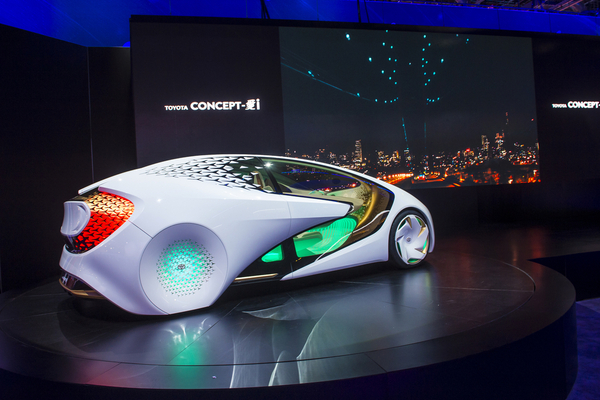The Olympics and Paralympics are coming to Tokyo next year, and official fleet provider Toyota is planning a massive deployment of battery-electric and hydrogen-powered vehicles.
The automaker says it will provide “3,700 mobility products and/or vehicles” for the Olympics, 90 percent of which will be “electrified.” That can mean either battery-electric, hydrogen-powered, or even gas-electric hybrid. Of the 3,700 vehicles, 850 will be battery-electric and 500 will be fuel-cell electric. The vehicles come in all shapes and sizes: cars, buses, shuttles, scooters, mopeds… you name it. Toyota sees the Olympics as its big chance to showcase its lineup of experimental and alternative fuel-powered machines, and it’s not going to squander it.
Obviously, Toyota’s top talking point is the reduction of carbon emissions. According to the company’s press materials: Out of the approx. 3,700 mobility products and/or vehicles for Tokyo 2020, 2,700 vehicles will be part of the official fleet providing transportation support between venues during the Olympic Games. These will be commercially-available vehicles, such as Mirai, etc. Preliminary calculations suggest that the CO2 emitted by the commercially-available fleet for Tokyo 2020 will average less than 80 g/km*1, resulting in a reduction by approx. half of the typical amount when compared to a similar sized fleet of mostly conventional gasoline and diesel models…. As such, Toyota aims to achieve the lowest emissions target level of any official fleet used at the Olympic and Paralympic Games.
Toyota, of course, was a pioneer in the field of alternative fuels, with the release of the hybrid Prius in 1997. But since then it has lagged behind in the race to release premium and mass-market electric vehicles, having been overtaken by Tesla, GM, Nissan, and others. The automaker has said it will release six new EVs starting in 2020 and stretching through to 2025, making the Olympics a grand stage from which to launch that lineup.
In addition, Toyota plans on rolling out two of its previously unveiled (and weirder-looking) concept vehicles: the e-Palette and the Concept-i. Toyota envisions these e-Palettes serving a variety of functions, from typical mobility services like ride-sharing and carpooling, to less typical purposes like serving as mobile office and retail space, medical clinics, hotel rooms, and more. But at the Olympics, the e-Palettes will “support transportation needs of staff and athletes, with a dozen or more running on a continuous loop within the Olympic and Paralympic Village.” Toyota claims the vehicles will be “Level 4” autonomous, meaning they won’t require a human driver, but will be confined to a specific geographic area.
The Concept-i (first revealed during CES 2017) will take center stage for Toyota as the operating vehicle in the torch relay and the lead car in the marathon. It will serve as both a platform for Toyota to show off its work with artificial intelligence, courtesy of the in-vehicle AI assistant “Yui,” and its work in highly automated driving. Toyota also plans to roll out hundreds of scooters of all shapes and sizes, including standing electric scooters, as well as an unspecified number of “sitting-type and wheelchair-link personal mobility devices.”
Most of these vehicles are inefficient in transporting vast numbers of people compared to public transportation modes like subways, trains, and buses. Tokyo is reportedly struggling to secure enough buses to meet the demand of the Olympic games, with the organizing committee anticipating needing at most 2,000 buses a day for the arenas around the city, and at least twice that number of drivers. So far, organizers have only produced 6,400 buses from the surrounding area, forcing the committee to expand its search.
—
Photo Credit: Kobby Dagan / Shutterstock.com
